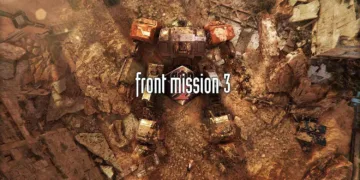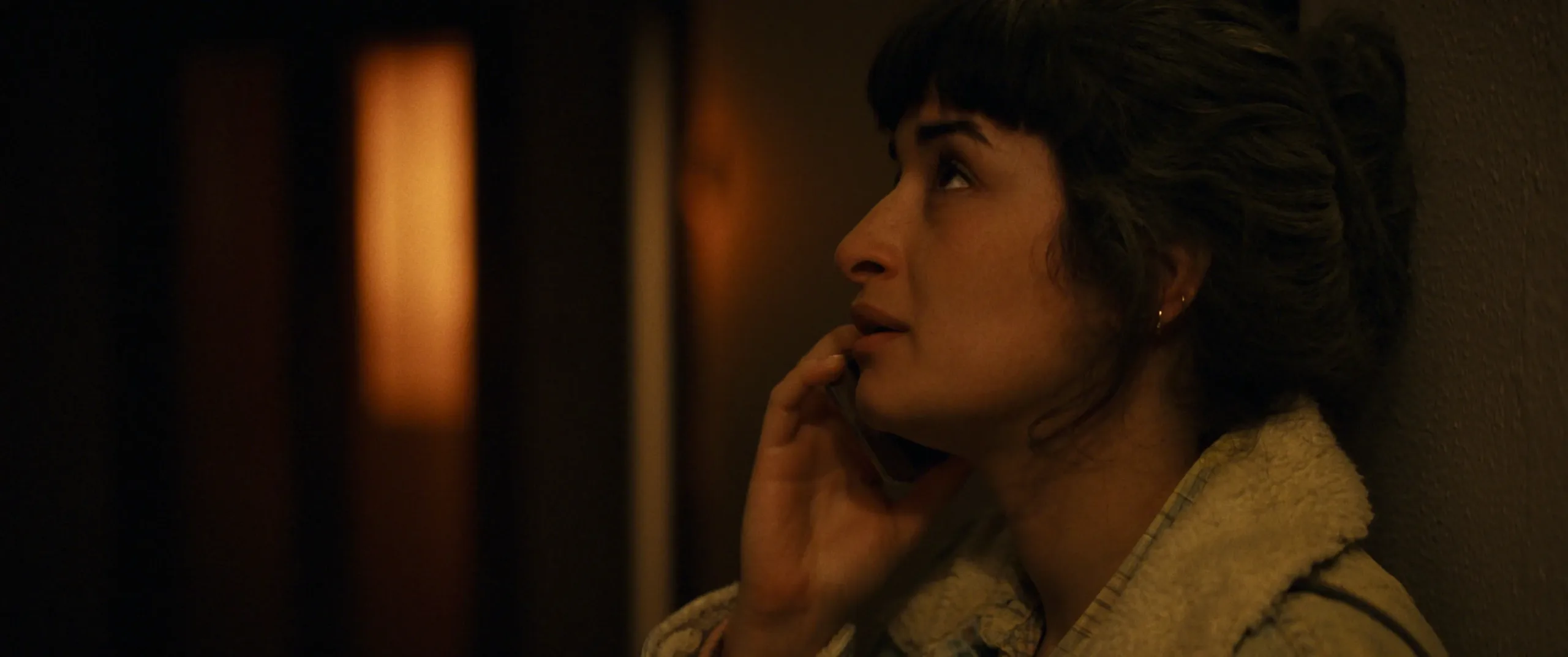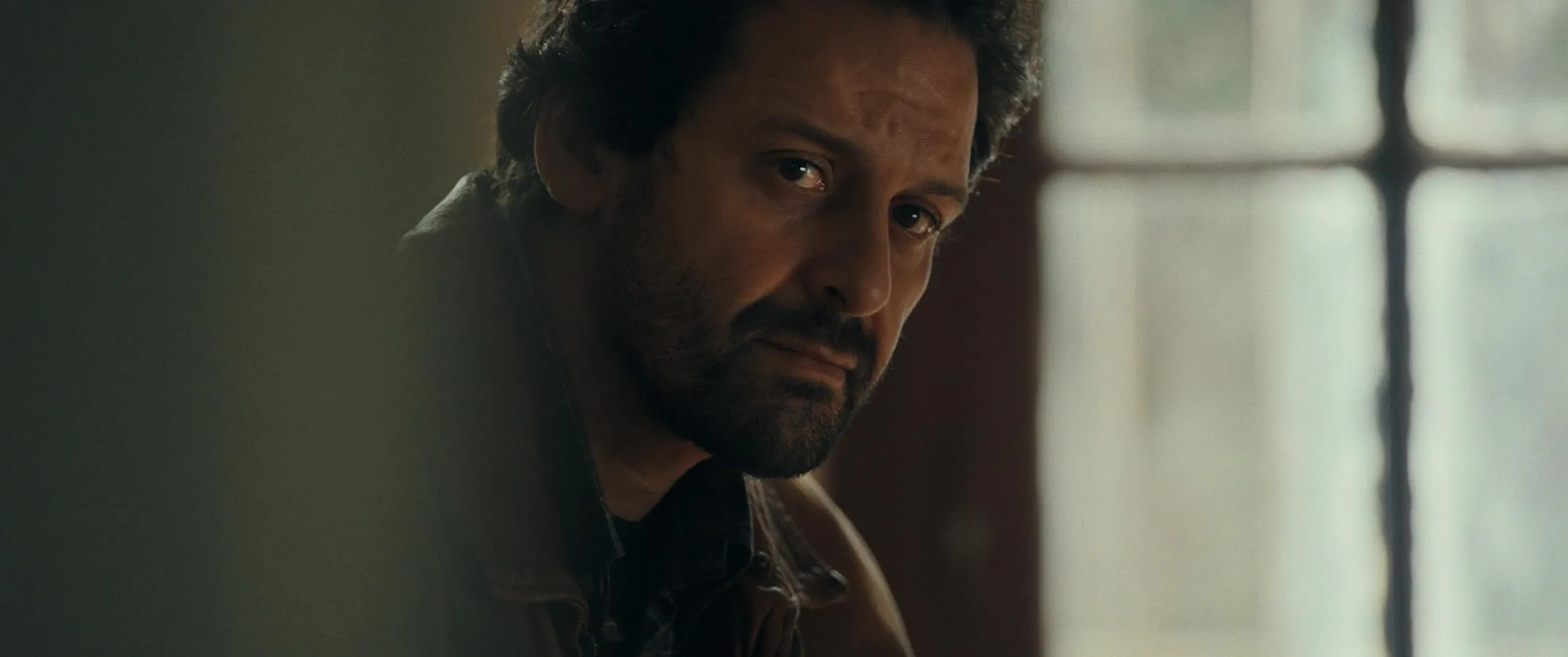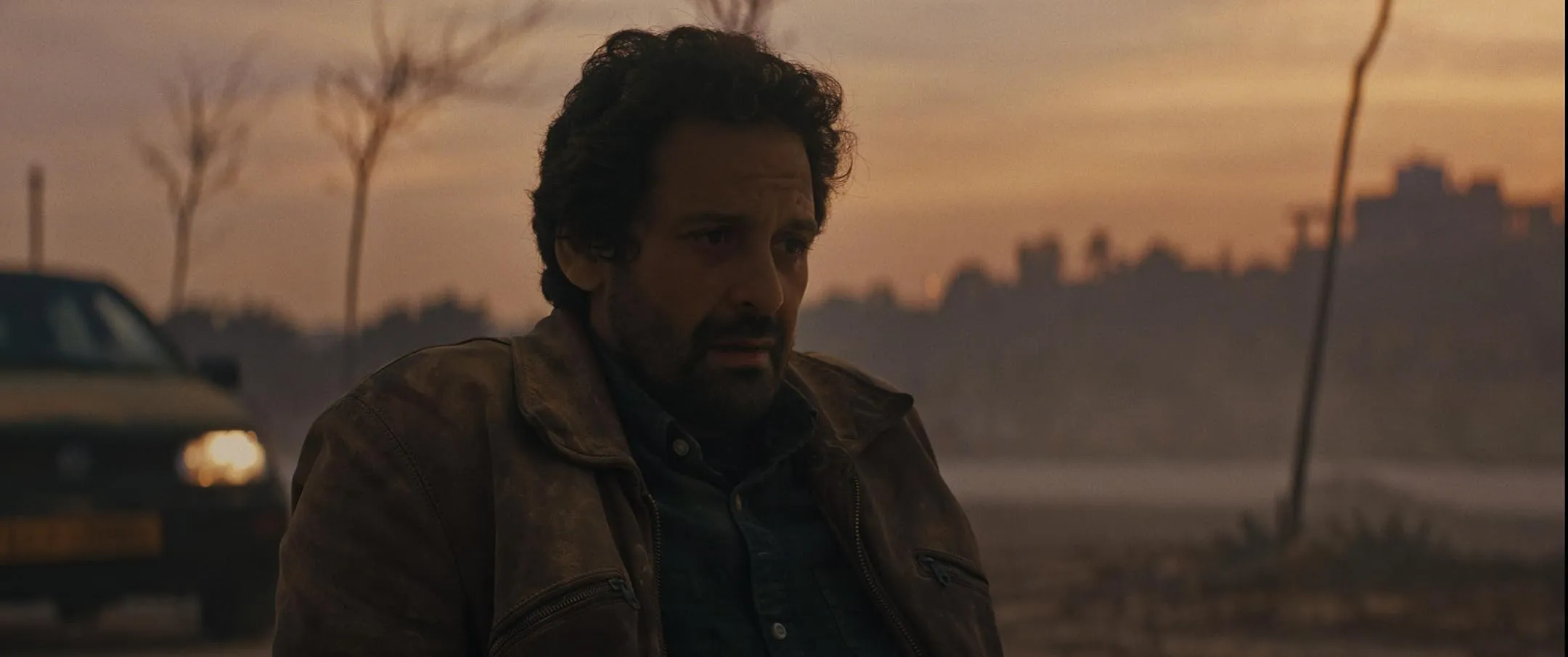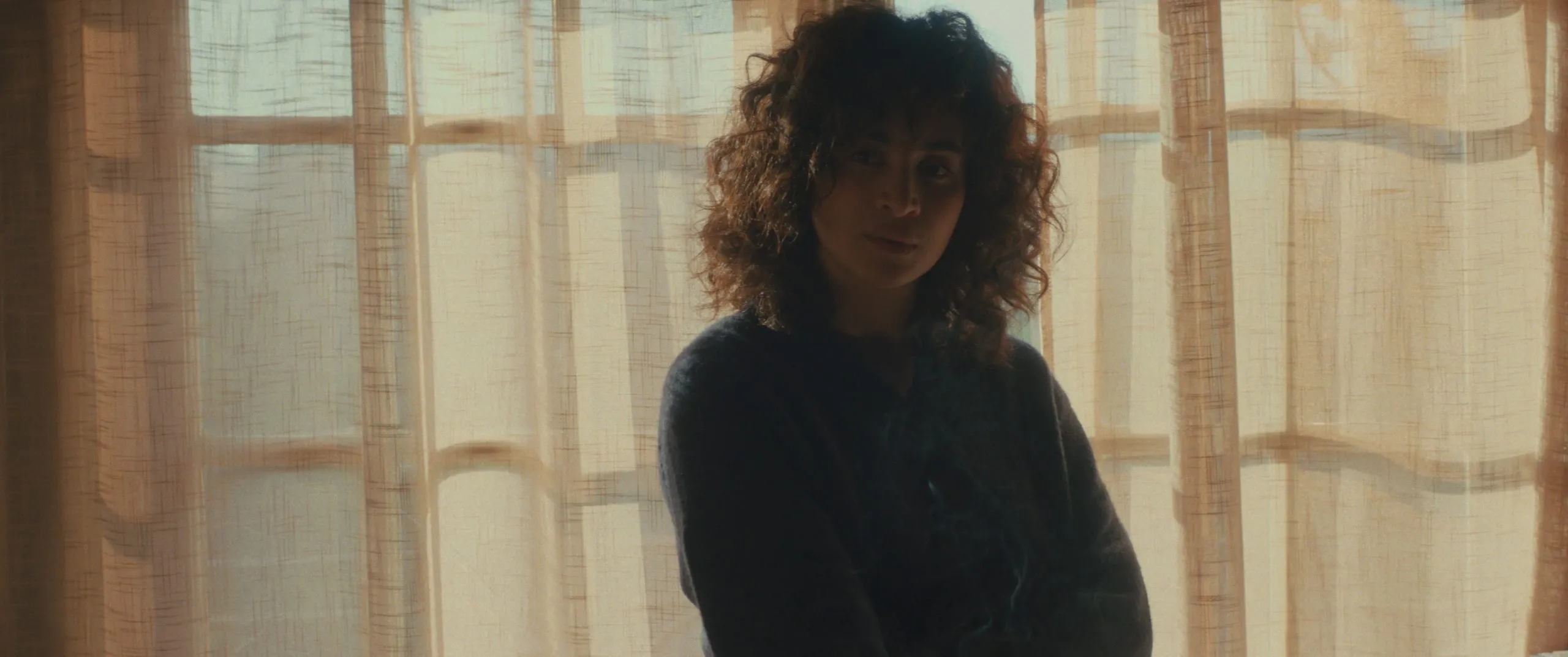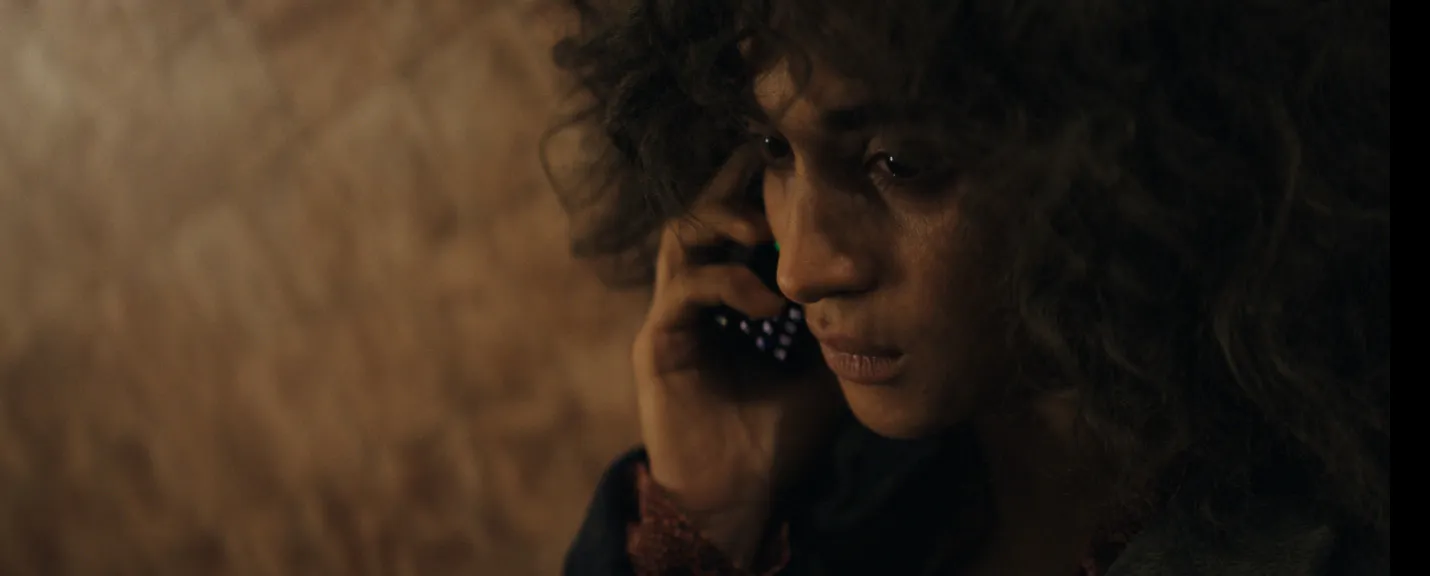Silent Storms presents a narrative that interlaces threads of political intrigue, spectral apparitions, and environmental calamity. It offers a mystery marked by relentless sandstorms and uncanny phenomena, inviting the audience to engage with a story whose contours are elusive and charged with evocative imagery. The plot unfurls through the perspective of a committed journalist investigating an unexplained dust phenomenon and surreal encounters that disturb the quiet of urban life.
Set in a contemporary Algerian city steeped in historical upheaval and political scars, the film situates itself amidst a landscape where past conflicts remain inscribed in the streets and architecture. The production’s French-Algerian origins lend the narrative a tone that carries echoes of inherited tensions and the imprint of cultural memory, enriching the setting with a palpable gravitas.
The artistic ambition is evident in the deliberate juxtaposition of concrete realism with flashes of the surreal. A careful eye for visual composition and a refined sensitivity to sound create an atmosphere both measured and charged with latent energy.
The interplay of light and shadow, the meticulous use of color, and the layering of ambient tones all serve to evoke a sense of mystery and anticipation, drawing the viewer deeper into the unfolding enigma and enriching the cinematic canvas with symbolic resonance.
Fractured Narratives: The Pulse of Silent Storms
Silent Storms centers on a singular quest: journalist Nacer’s methodical pursuit of truth amid a perplexing occurrence of yellow dust and spectral resurgences. The investigation interlaces his dedication to uncovering hidden realities with an intimate odyssey born of his wife Fajar’s abrupt departure from life.
An inquiry that begins with practical motives swiftly transforms into an encounter with phenomena that defy ordinary explanation, as the reappearance of the dead imbues the narrative with a disquieting tension and an enigmatic allure.
The film assembles a collection of narrative strands with deliberate precision. A subplot follows Nacer’s doctor brother, Yacine, whose own personal losses and fraught emotions create a counterpoint to the central investigation. Simultaneously, the figure of Shahrazad emerges as a subtle yet significant presence, offering a contrasting rhythm that punctuates the unfolding events.
These interwoven arcs contribute layers of complexity, each thread converging to construct a structure rich in ambiguity and textured meaning. The multiplicity of voices and paths invites scrutiny of how personal grief and collective memory intermingle within a society marked by past conflicts.
The pacing is orchestrated through a measured interplay between quiet reflection and sudden, dramatic shifts. The film eschews a straightforward chronological order in favor of a dynamic arrangement that oscillates between moments of serene observation and bursts of narrative energy. Such structuring crafts a deliberate crescendo, building toward a visually arresting apocalyptic sequence that leaves a lasting impression on the viewer.
The editing choices are deliberate and precise, enhancing the rhythm of unfolding events without sacrificing narrative clarity. Every meticulously crafted scene contributes to a rhythmic cadence that defies straightforward sequencing, imparting an ambiguous quality to the unfolding tale. The interplay between serene, measured moments and sudden, forceful interruptions in tempo forms a structural motif that continuously reconfigures expectations. This structure invites continued inquiry and reflection.
Specters, Sand, and the Scars of History
Silent Storms unfurls a narrative where Fajar’s spectral return becomes a striking emblem of unassuaged sorrow. Her sudden reappearance transforms the personal into the profound, as Nacer contends with the weight of a loss that refuses to be consigned to memory.
Each encounter with her elusive figure prompts a quiet inquiry into the nature of absence and the persistence of grief—a phenomenon rendered with precision and a palpable sense of inevitability.
Interlaced with this intimate exploration is a meditation on a society still marked by the echoes of a violent past. The film summons the troubled legacy of Algeria, evoking the remnants of a civil conflict that continue to shape urban spaces and personal destinies alike.
The narrative does not treat history as a distant echo but as a living presence, manifest in the silent murmurs of streets and the darkened faces of its inhabitants. Political discord and the lingering residues of a brutal era infuse the film with a somber intensity, prompting an examination of how historical fissures persist in the everyday.
Nature herself emerges as a powerful symbol through the enigmatic yellow dust and the relentless sandstorms that sweep across the cityscape. These elements evoke nature’s uncontested force and mirror the aftermath of human turmoil. The ever-advancing storm clouds and swirling particles serve as metaphors for the chaos left behind by conflict and the inexorable march toward transformation.
In these visual motifs, there is a questioning of the order that society constructs against the unpredictable, elemental power of the natural world. Each scene casts nature as both an agent of destruction and a silent witness to human frailty, inviting a contemplation of renewal amid the ruins.
Embodied Narratives: Portraits in Motion
Nacer emerges as a figure of dual commitment—a dedicated journalist whose pursuit of truth collides with the weight of personal loss. His investigation of the mysterious sandstorms intertwines with the lingering sorrow of his wife’s absence, each measured step along his path underscoring a relentless search for answers amid haunting voids.
This portrayal transforms a routine inquiry into a vivid exploration of duty, grief, and the ineffable marks left by loss, each scene carefully constructed to reveal a man driven by equal measures of professional rigor and unspoken heartache.
Fajar appears with an enigmatic grace that disturbs the conventional boundaries of presence and absence. Her unexpected return injects a spectral quality into the narrative, shifting a personal memory into a force that shapes the unfolding mystery.
Her fleeting appearances echo like murmurs, challenging established notions of identity and finality while sparking questions that ripple through the story. The deliberate ambiguity surrounding her motives amplifies the film’s exploration of unresolved mourning, lending an otherworldly texture to what might have otherwise remained a conventional investigation.
Supporting characters contribute with their own subtle intensities. Yacine, marked by quiet tragedy, mirrors the communal scars borne from turbulent pasts, his restrained sorrow casting long shadows over the narrative.
Shahrazad offers a counterbalance, her presence punctuating the solemn rhythm with brief but striking moments of clarity and energy. The ensemble’s interactions evolve into a nuanced dialogue where each glance and pause speaks volumes, heightening the palpable tension that infuses every frame.
The performances manifest a rare precision and mutual responsiveness. Actors communicate through gestures and silences that speak with clarity and force, their interactions transforming scripted dialogue into living art. The chemistry displayed within each encounter contributes a resonant power that deepens the film’s persistent inquiry into the human condition.
Cinematic Allegory: Crafting a Sensory Universe
In Silent Storms, a precise interplay of light and shadow casts an arresting mood. A deliberate palette of deep blues and striking oranges shapes the frame, while stark contrasts and subtle gradients evoke a world that teeters between tangible reality and elusive fantasy.
Chiaroscuro reveals hidden textures in each scene, sculpting the narrative with visual clarity and intensity. The interplay of light and darkness transcends simple illumination, sculpting a visual narrative that invites a discerning gaze to register delicate shifts in mood.
The design harnesses natural elements as narrative instruments. Shifting sands, drifting dust, and ominous storm clouds appear as integral participants in the story. Practical effects and meticulous set construction create an environment that transforms the physical landscape into an active presence echoing the film’s deeper concerns with upheaval and decay. A meticulous attention to environmental detail transforms set pieces into living, breathing characters that mirror internal turbulence.
Auditory textures complement the visual discourse. An understated, ambient score interlaces with moments of sound that heighten each scene, crafting an audio landscape where hushed tones yield to sudden bursts of sonic clarity.
The measured cadence of each auditory cue invites a heightened awareness of unfolding drama, lending gravity to the film’s narrative. Sound design intricately punctuates the film’s moments, transforming silence into a canvas where meaning vibrates with a quiet, potent force.
Visual storytelling here attains a poetic dimension. Each frame functions as a subtle allegory, where symbolic imagery transforms the interplay of dust and storm into a meditation on human frailty and the relentless march of change. The director employs precise stylistic choices that convert fleeting images into evocative visual motifs, inviting a reexamination of the tensions between order and entropy. Every visual choice contributes to an immersive, lyrical universe.
An Aesthetic Manifesto: Vision and Verbiage
Dania Reymond-Boughenou orchestrates a cinematic world where varied genres intermingle with confident audacity. Her direction channels a deliberate narrative ambiguity expressed through a measured pace and artful composition. The film unfolds with a sense of purposeful uncertainty, inviting reflective analysis of its daring structural choices while constructing a visually arresting mosaic of ideas.
The dialogue unfolds as a poetic cadence, its measured verses bearing the weight of grief, memory, and lingering trauma. The language adopts a form that balances lyrical expression with a disciplined opacity, permitting characters to reveal their inner lives through suggestive and often enigmatic exchanges. Each line in the script serves as a subtle marker of emotional depth, articulating the complexities of personal loss without resorting to overt exposition.
Precision in editing further shapes the narrative, interlacing moments of calm observation with sudden shifts that disrupt the flow with striking effect. The rhythmic transitions achieved by these editing choices create a dynamic tension that challenges straightforward storytelling. Each carefully timed cut and pause contributes to an evolving cadence, constructing a space where deliberate ambiguity emerges as a stylistic choice.
This interplay of controlled sequences and unexpected disruptions deepens the viewer’s engagement, encouraging a perception of narrative coherence that remains ever flexible. The film’s approach to pacing and structure transforms every pause and transition into an essential element of its aesthetic, constructing a deliberate canvas where meaning continuously unfolds in measured, evocative layers.
Enduring Echoes: Impact and Vision
Silent Storms commands attention with its ambitious melding of narrative elements that confront the scars of political upheaval, personal bereavement, and the subtle omens of environmental decay. The film’s narrative framework defies neat categorization, channeling an intricate interplay of symbolic imagery that casts familiar themes in provocative lights.
In synthesizing stark realism with an aura of the mystical, the film constructs a cinematic landscape where historical turbulence and intimate sorrow converge with deliberate precision, leaving a persistent imprint on cultural discourse.
The collision of the tangible with the ethereal transforms the viewing experience into a dialogue on memory and collective pain. Stark portrayals of human frailty, juxtaposed against surreal, dreamlike visions, command an intellectual engagement that resists simplistic interpretation.
Director Dania Reymond-Boughenou’s deliberate choices in narrative structure and visual storytelling articulate a cinematic language that is as uncompromising as it is imaginative, propelling the work into a sphere of innovative artistic expression.
The cumulative effect is a piece that challenges established conventions while illuminating the profound interconnections between societal wounds and personal loss, offering a striking reflection on the complexities of modern existence.
The Review
Silent Storms
Silent Storms is a bold and provocative film that dares to merge political trauma with personal grief and the force of nature. Its layered narrative and striking visuals challenge conventional storytelling, offering an intricate exploration of loss and historical memory. A daring artistic vision and evocative style transform the cinematic experience into a work that invites thoughtful reflection.
PROS
- Stunning visual imagery that paints each scene with precision.
- Layered narrative that challenges the viewer with depth.
- Poetic dialogue that enriches the thematic content.
- Strong performances that anchor the film’s complex story.
CONS
- A narrative structure that may feel overly complex.
- Moments of ambiguity in dialogue that can obscure meaning.
- Subplots that occasionally disrupt the central focus.
- Pacing that fluctuates between measured calm and abrupt shifts.

































